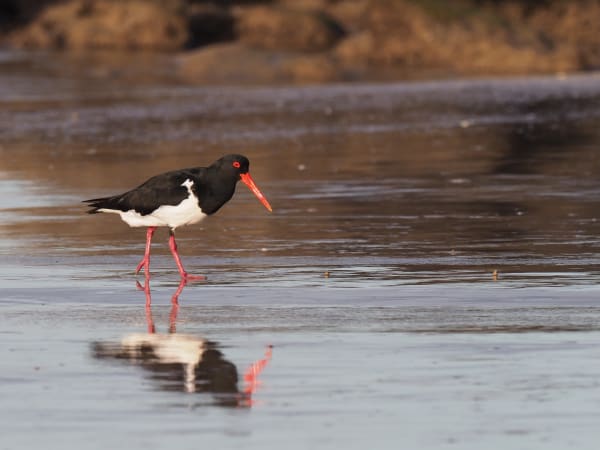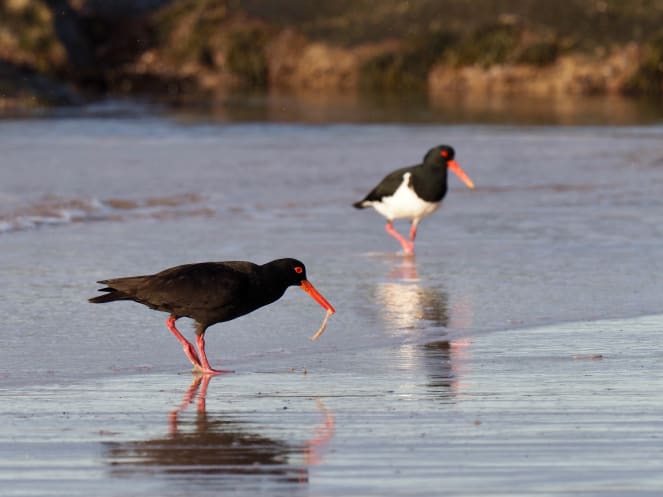Here’s a twofer for you: This week’s Creature Feature is the Sooty Oystercatcher and the Pied Oystercatcher. Full disclosure, I ran into these two species feeding on the same beach at Broulee Nature Reserve but we do get both species here in the Illawarra.
Sootys are often heard before they’re seen, feeling the need to announce their arrival, loudly. I always find them kind of funny looking in that they have this incredible orange bill and eye ring and then their legs don’t match. C’mon birds, that’s just not fashion, darling.
These birds are listed as vulnerable in NSW and you will see signs around the area to keep dogs on leash and off certain beaches in an effort to protect both them and their nests. They lay their eggs in a scrape in the ground on rocky beaches. As for food, you’ll often find them prying molluscs off rocks or plunging their bills into dislodged cunjevoi to the fleshy insides and feasting on the occasional sand worm.

Pied Oystercatchers have a similar look and are a similar size to the Sooty Oystercatchers. While sootys prefer a more rocky, coastal habitat, the black and white Pied Oystercatcher prefers mud or sand flats and sandy beaches. I found them with their beaks probing the sand looking for worms (which they found!), molluscs and crabs.
These birds are classified as endangered in NSW. As with the sootys, the Pied Oystercatcher also chooses to nest in a scrape in the ground, above high tide line and often in dunes. A good reminder to be mindful about where you walk when on the beach. Breeding season is August to January.
So considering their conservation status, I felt super lucky to spot not just one but both of these species, happily feeding away. Some days, a girl just gets lucky.






